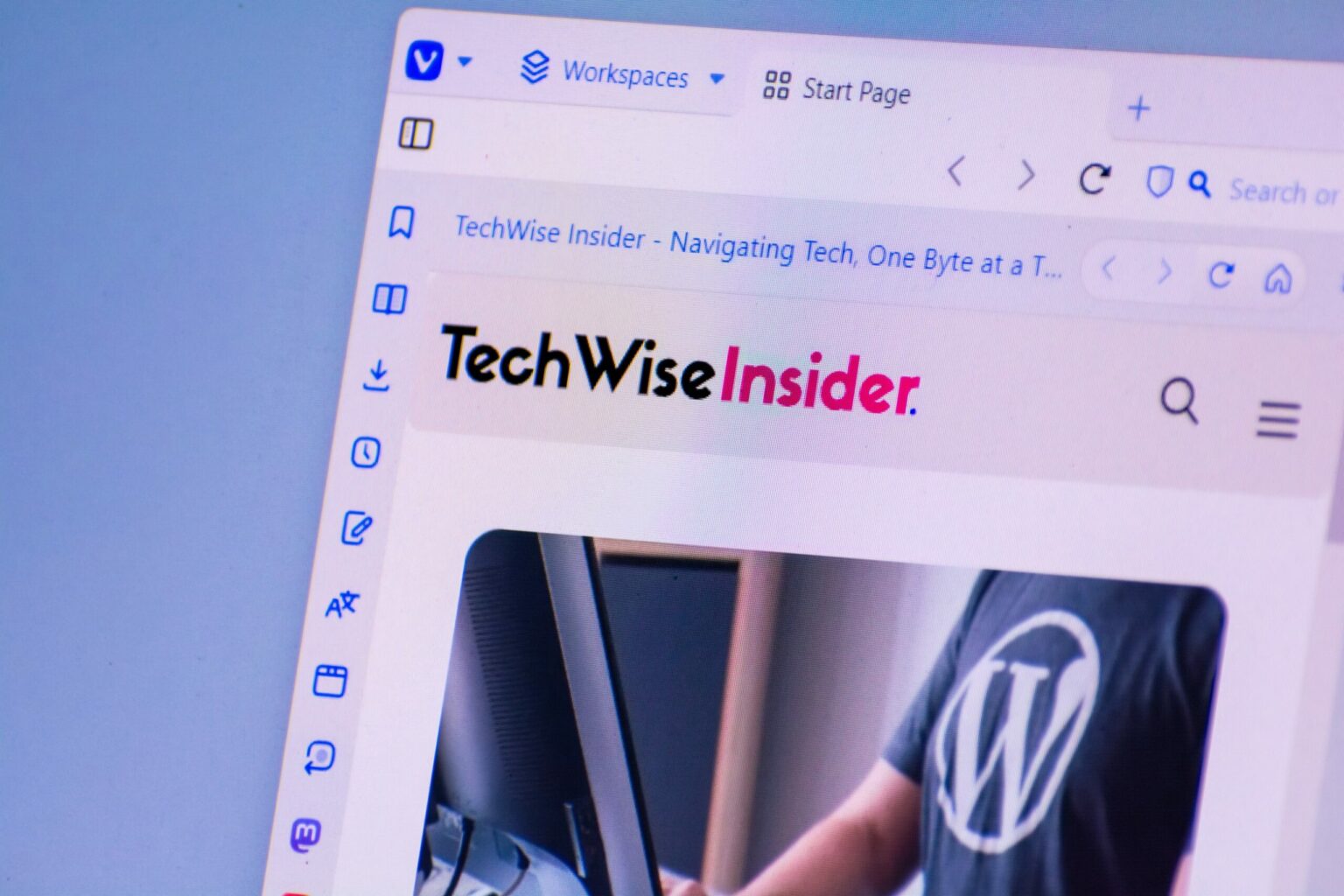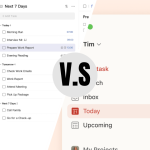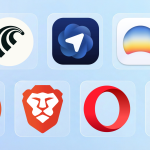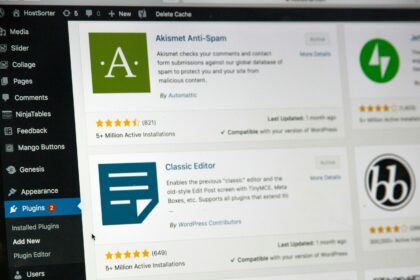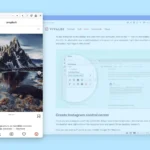Gone are the days when browsers only had a few basic options and features. Vivaldi Browser, a privacy-focused little tool created by people like you and me, has helped me stay organized for many years now, and I’d like to share how with anyone looking to declutter their digital life.
- 1. Use the Reading List to save any content
- 2. Add your favourite websites to the RSS Reader to stay updated
- 3. Quickly check your new Emails and Calendar
- 4. Organize your Bookmarks in the Speed Dial
- 5. Add your most important websites to the Web panel
- 6. Quickly keep notes
- 7. Use the Pomodoro Timer to take breaks
- 8. Organize your tabs by stacking or tiling them
- 9. Manage your tasks from the Task List
- 10. Create different Workspaces
There are many things to be said about Vivaldi and the ton of options and features that it provides to its users, but today we’re going to stick to staying organized. What makes this browser different is all the customization options, but apart from that, it can save you lots of resources and tabs, if you just use it right.
1. Use the Reading List to save any content
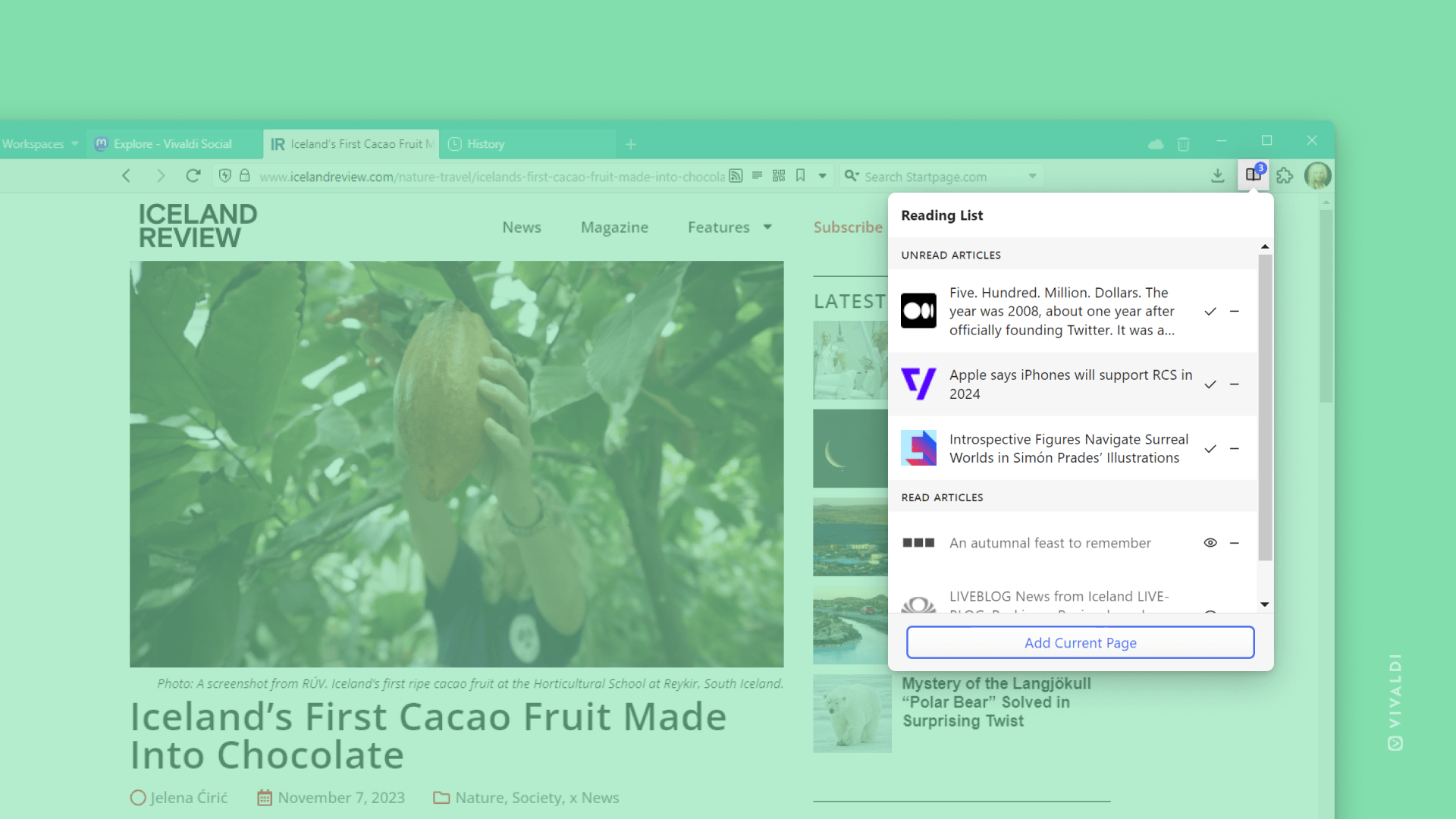
Before Vivaldi Browser, I had to use third-party apps to save links, interesting articles, videos, and other types of content to read later. I started with Instapaper, moved over to Pocket, and then Raindrop stole my heart. And while I am still using the last one, Vivaldi has saved me tons of time as it gives the option to save any page from both my desktop PC and mobile device, and it automatically synchronizes them so I can have them available at any time.
Vivaldi’s “Reading List” feature is as simple as it gets, and you can save any page by either clicking on the “+” icon or by right-clicking and “Add link to Reading List“. Now it doesn’t have any offline support, per se, but it’s a quick and easy way to save anything that you may find interesting and want to read later or simply have it somewhere saved and available at any time.
2. Add your favourite websites to the RSS Reader to stay updated
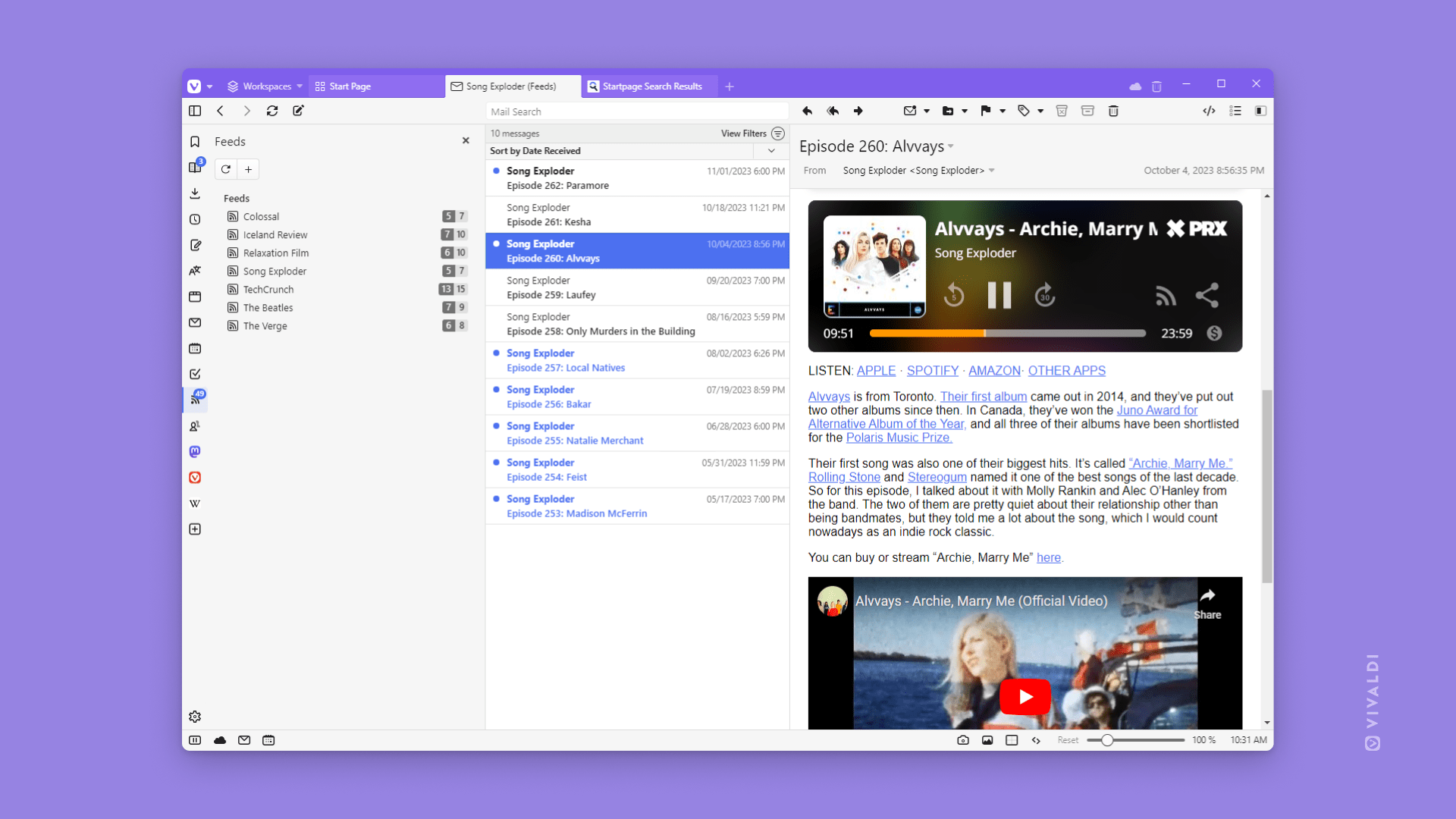
The RSS is still one of the most used technologies in the world, and for all the good reasons. With an RSS Feed, you can stay updated with your favourite websites and get notified whenever they publish new content. You can use tons of apps to do that, including Feedly and Innoreader, but if you’re looking at using fewer third-party tools, Vivaldi has that integrated.
It’s called “Feeds” and it lets you add any website you want by providing a title and an address. To make things even easier, Vivaldi also has its own RSS icon in its address bar which you can click on any website and get its RSS Feed links. Some websites may provide multiple RSS feeds, but most of them have a main one that you can follow and stay updated with their newest content.
3. Quickly check your new Emails and Calendar
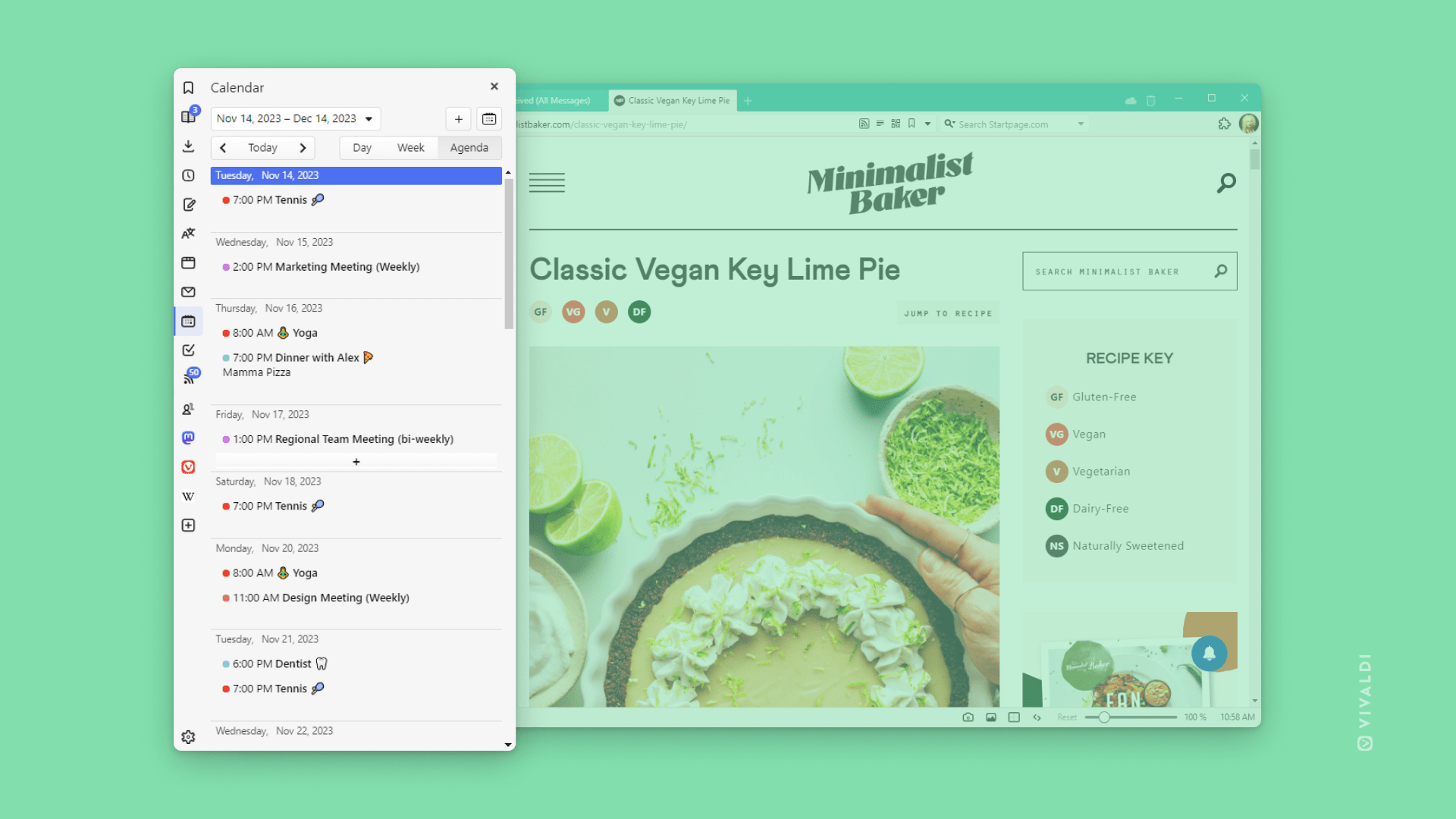
Vivaldi has integrated an email client and a way to have your calendar available at any time, one click away. It’s fast, it works, and it makes checking for new emails easier than ever before. Unfortunately, you cannot send or reply to any emails, but that’s not really a problem, as I want something to help me stay updated without having to manually check my emails or visit Outlook’s website. You can also add your Gmail, Outlook, IMAP or POP3 accounts, which is a nice addition.
But there’s a trick with Vivaldi’s Mail feature, and it’s a pretty neat one; Did you know that you can use this feature to bulk delete hundreds of emails at once? Yep, just connect your email account, head over to your latest emails, and select as many as you want (by pressing the Ctrl + clicking) or even by pressing Ctrl + A to select them all and delete them.
This was the best way for me to declutter my email account from older emails – heck, I even found some emails from 2013 which I didn’t even know I still had.
4. Organize your Bookmarks in the Speed Dial
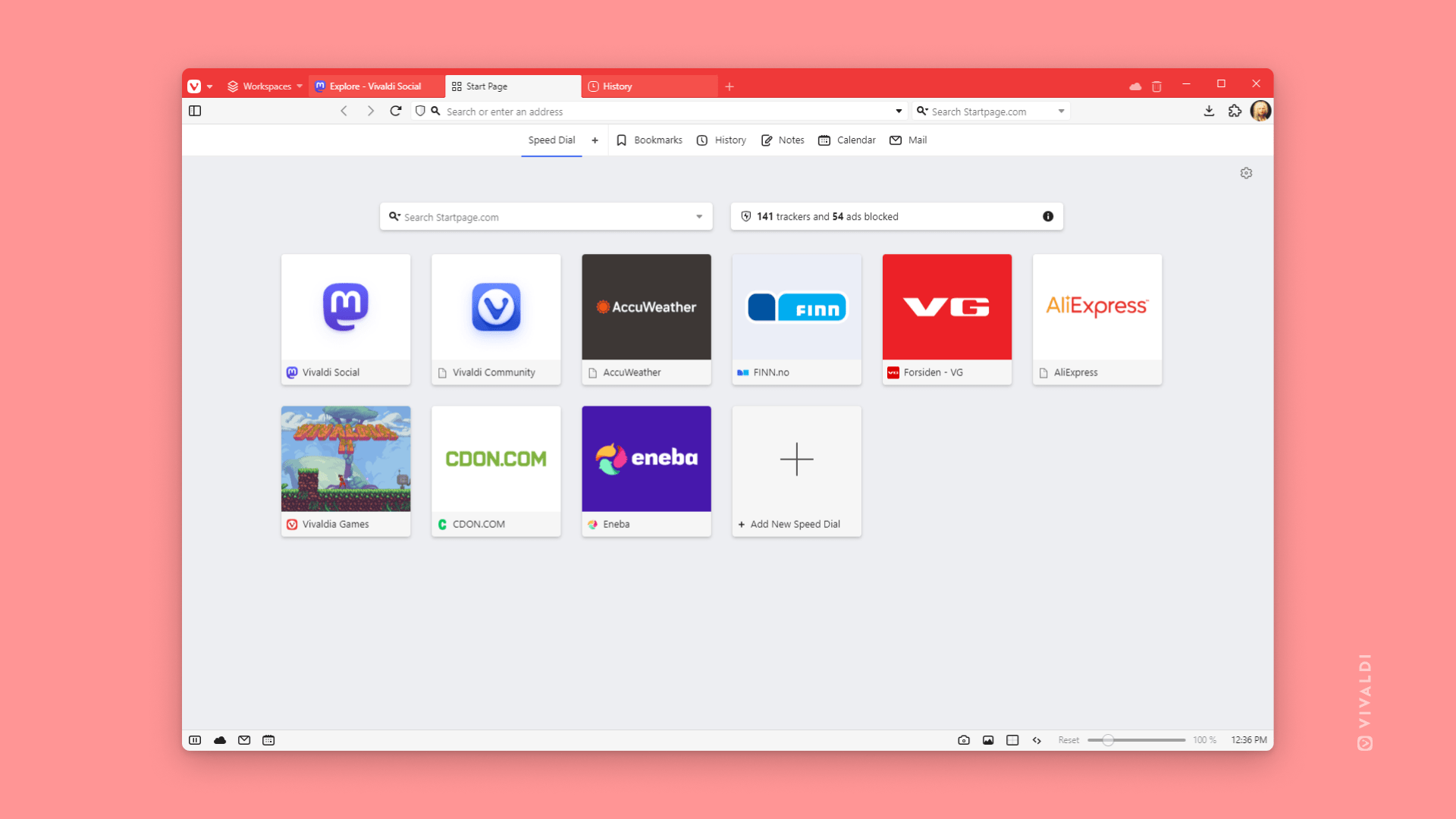
Bookmarks are nothing new, but with Vivaldi, you can dive deeper by organizing them and apart from having the classic bookmark bar, you can even have more of your favourite websites saved in your Speed Dial. But there’s even more to it; You can have as many bookmark folders as you want, and choose if you want them placed in your bookmarks bar or your Speed Dial.
The Speed Dial shows up whenever you open a new tab, while the bookmarks bar is displayed just below the address bar of the browser. You can easily move bookmarks from one folder to another, and drag folders from the bookmarks bar to the Speed Dial and vice versa.
If I am being honest, if I had to import all the bookmarks that I have in another browser, my bookmark’s bar will instantly get bloated and I’d have to solve a whole mess of saved URLs.
5. Add your most important websites to the Web panel
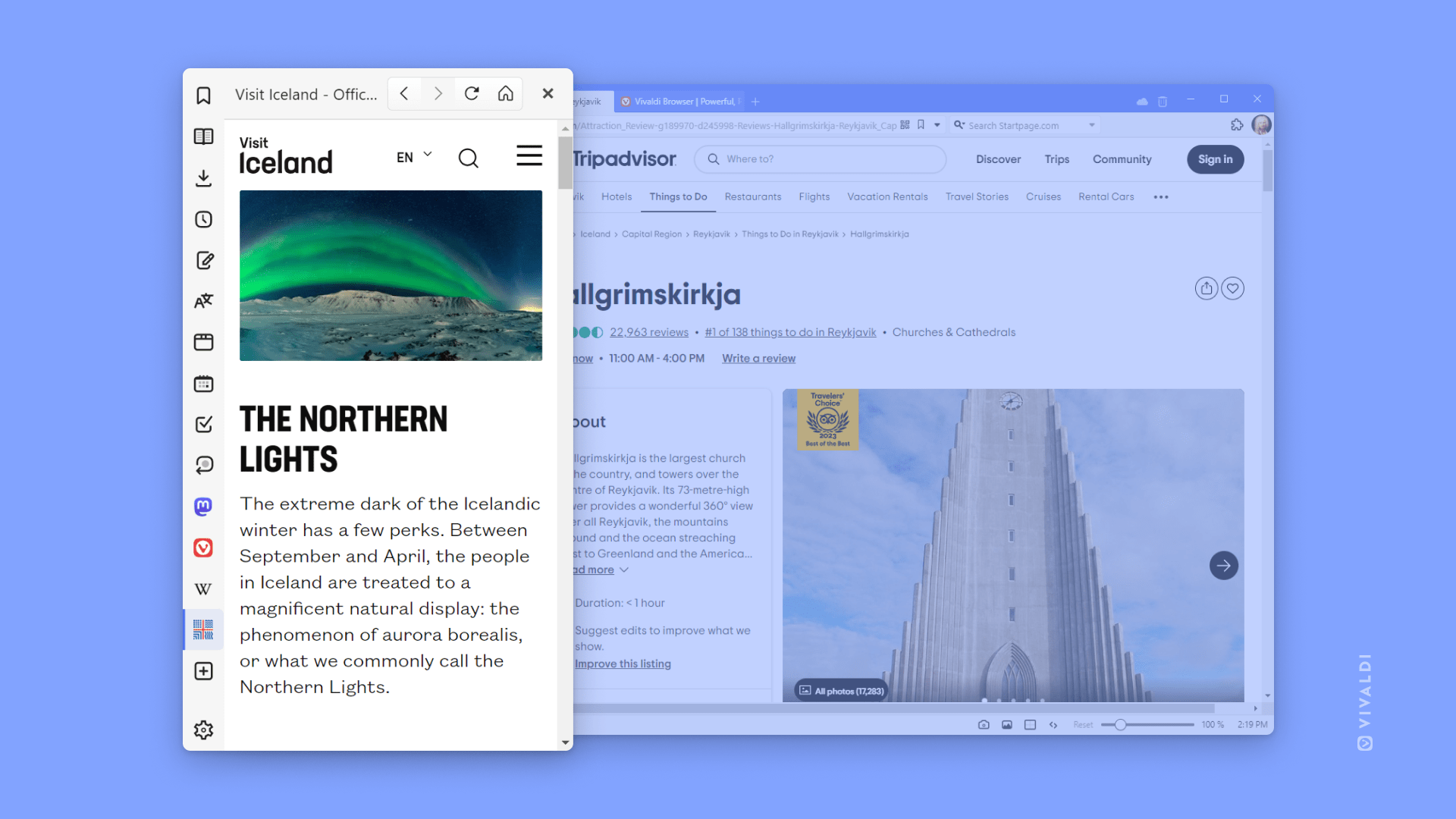
Vivaldi’s Web Panel on the left side of the browser’s window is my most used feature. It has improved – and I can’t stress this enough – my whole multitasking experience and made my life a whole lot easier. Simply put, you can add any website that you want and open it with a single click, anytime you want to. Vivaldi will then open the website with its mobile version, and you can increase or decrease the same as you fit.
In my case, the Web Panel is filled with various websites and lots of times I delete some and add new ones. You can even use it to add Instagram, TikTok, X (Twitter), BlueSky, Threads and other social media platforms, and instantly upload content from that little window. If you’re a content creator, you may find yourself having websites like Wikipedia, which is a nice source for learning anything about anything. And yes, you can even use ChatGPT and other AI tools.
If you click the Ctrl button on your keyboard you can then drag (upwards and downwards) the websites and place them in your preferred positions. You can remove any website or option by right-clicking -> Edit -> Remove the Toolbar. Unfortunately, those websites won’t be synchronized to your Vivaldi account, and they’ll be reset once you install the browser on another device or format your PC. But adding a few websites in the Web Panel is not that big of a dealbreaker for me.
6. Quickly keep notes
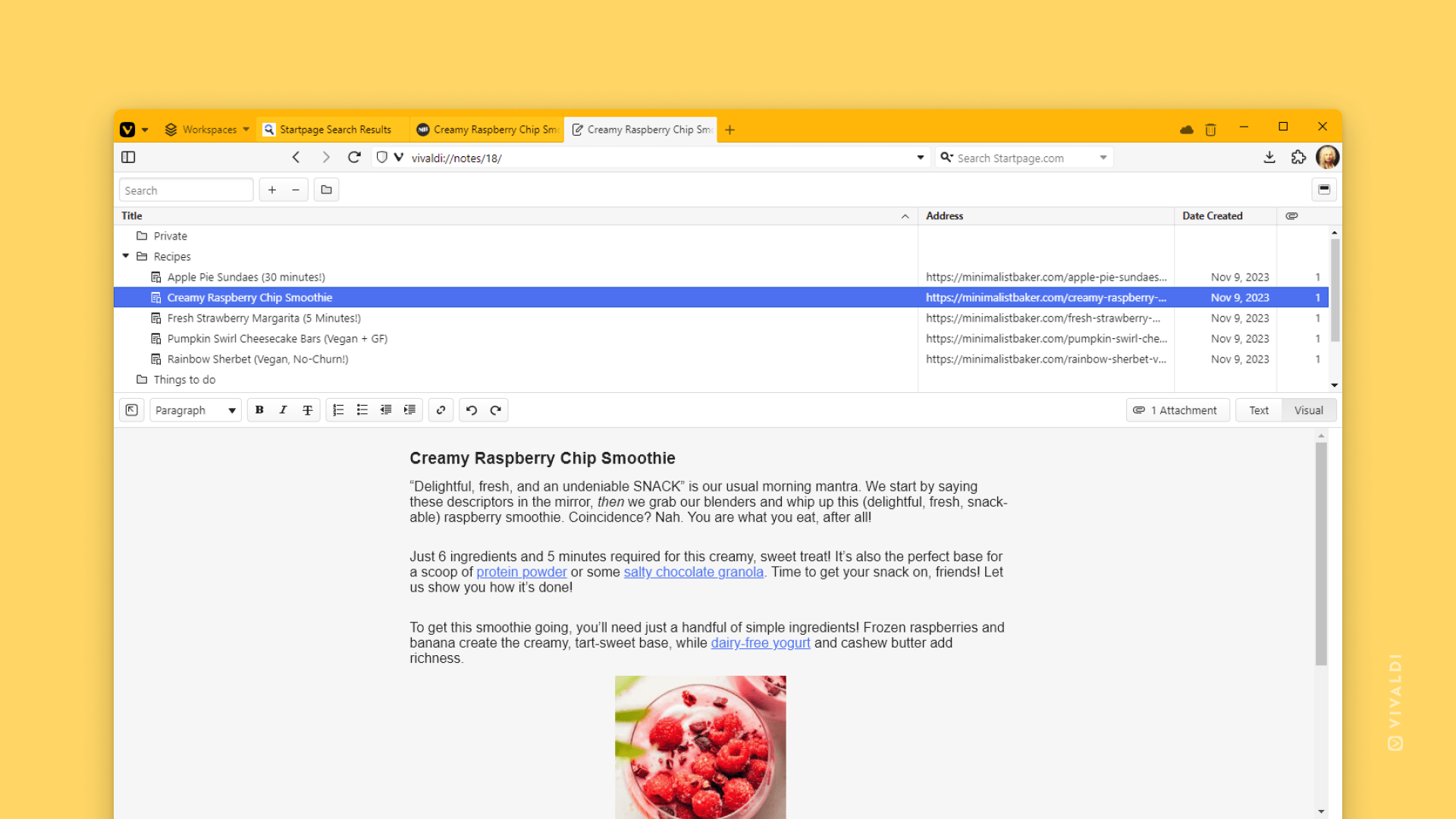
I can’t count the times that I wanted to quickly keep a note when I was talking with a client and I was working with my browser at the same time. Yes, you can change apps and add a new note, but sometimes I was sharing my screen and I didn’t want to keep changing windows. Here’s where Vivaldi came to the rescue, as it has its own note-taking system built-in in its Side Panel.
All of your notes will be automatically synchronized to your account, and thus they’re always available from any other device. Quickly keeping notes from your smartphone and having them available on your PC (and vice versa) is not something new, but having them right inside your browser without a third-party extension is pretty neat.
7. Use the Pomodoro Timer to take breaks
I’ve been using the Pomodoro Technique for many years now, and it has improved my life a lot. Taking small breaks is important when you’re working for hours, but remembering to do it is a whole other story.
This is where Pomodo is used, where you set a 25-minute timer (or simply, a “pomodoro”), you start working on your task until the timer goes off, and you take a 5-minute break. After four pomodoros, you take a longer 15-minute break.
While it’s pretty easy to set a timer from your operating system’s alarm app, or even use your smartphone for that matter, using Vivaldi is a whole lot easier and faster. Take a look at the bottom right corner of your browser, and you’ll see the time. Click on it and you’ll get access to your Pomodoro settings, in which you can set your own time for the countdown.
You can go even deeper by adding a name and saving your own presets, which is a pretty nice addition.
8. Organize your tabs by stacking or tiling them
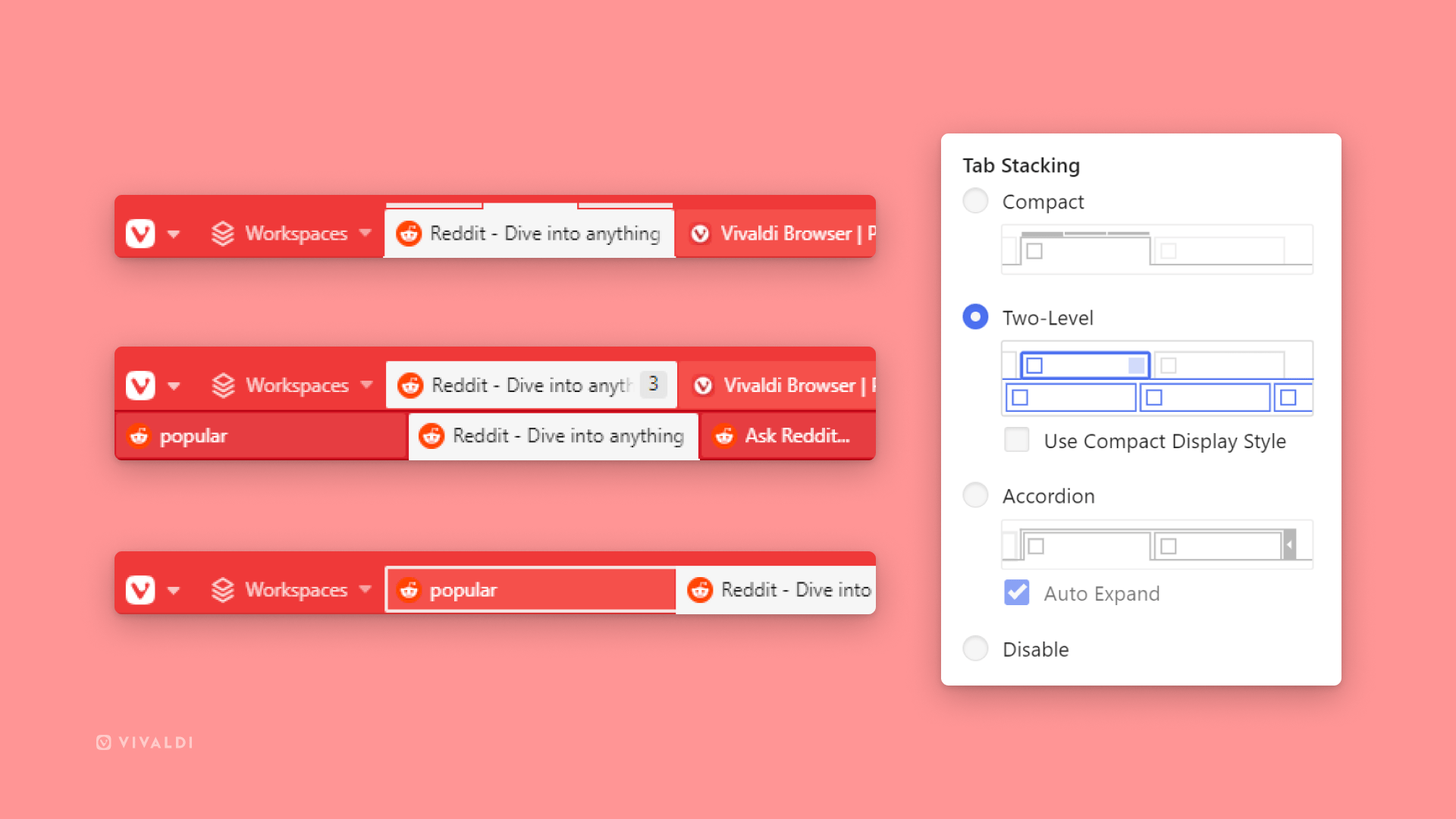
When there are tons of different tabs open, your browser can easily get bloated, which is not good news when it comes to productivity and finding the right tab without looking for it for 2 minutes. With Vivaldi Browser, you can quickly organize all your active tabs by stacking or tiling them.
Stacking tabs is like grouping them into one tab, and whenever you visit that tab or hover it with your cursor, you immediately see what’s there. To stack tabs is easy, just drag any tab above another, and you’ll see both of them notifying you that you can stack them together. You can also press the Ctrl on your keyboard and select multiple tabs at once, and then right-click and select “Stack Selected Tabs“.
Tiling your tabs means having them side-by-side in a single window, which is perfect for people with big screens or everyone who needs more than one tab in the same window without having to open the browser multiple times. To tile tabs, simply click Ctrl, select the tabs you want to tile, right-click and choose the “Tile Tabs” option.
9. Manage your tasks from the Task List
Managing your tasks is similar to your notes, simply click on the “Tasks” icon that’s on the Side Panel on the left, and your task list will appear. You can add a new task by simply clicking on the “+ Add Task” button, and you can add as many as you’d like. But this is not a simple feature, as it comes with its own little features which makes it even better.
For every task, you get the option to add a title and set a due date so Vivaldi can notify you whenever’s the time. You can add every task to your Calendar, which you can also access from the Side Panel.
Additionally, you can also set repeated tasks, add a location, a description and a link, and even create your own templates (One-hour meeting, doctor’s appointment, etc). Your tasks will also be available from the Calendar window.
10. Create different Workspaces
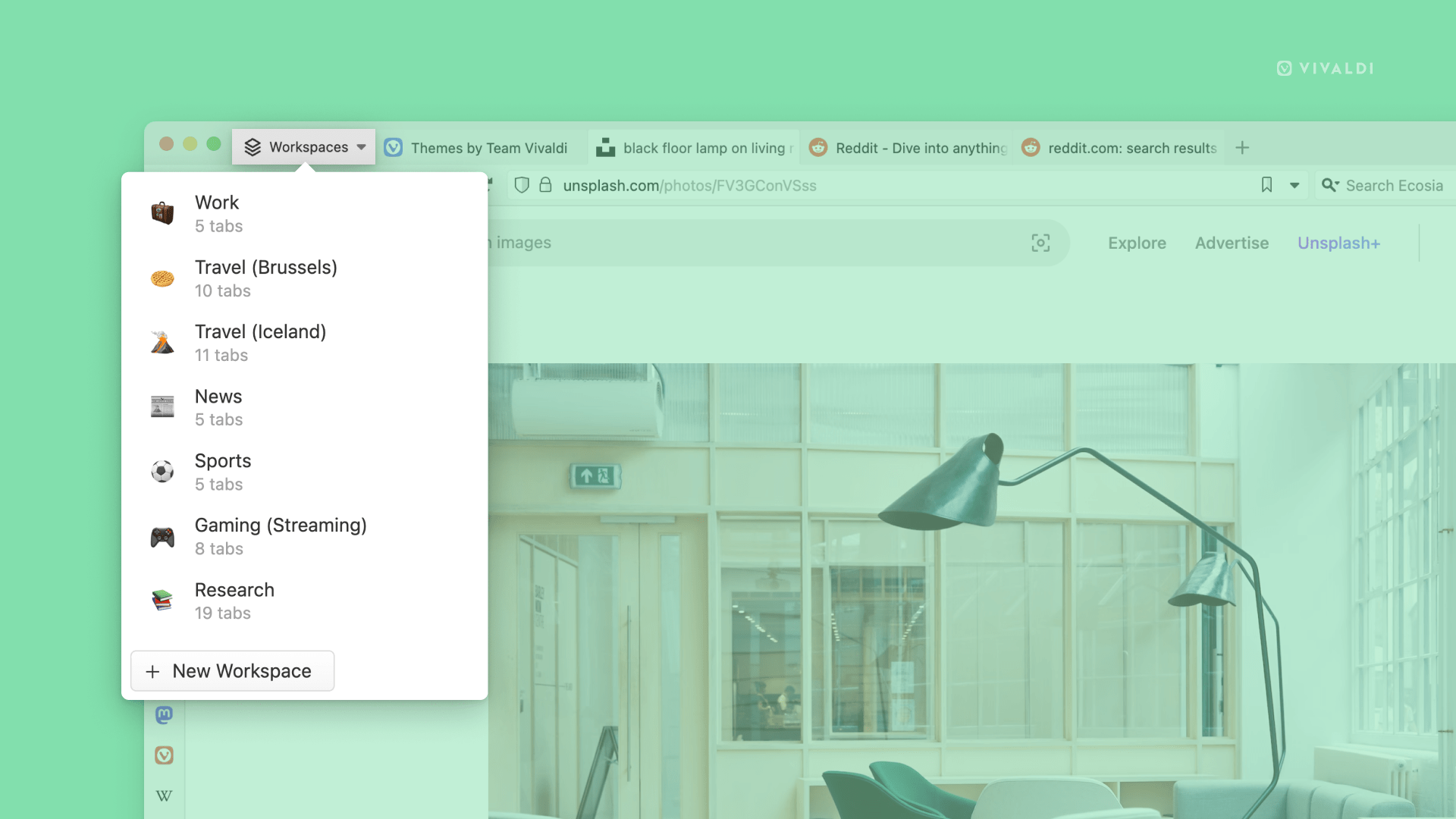
Here’s the thing; Even if I have all my tabs stacked and perfectly organized, most of the time I have so many active at the same time, some for my personal projects, others for my clients, and even videos from YouTube that I was watching earlier this morning, that doesn’t mean I want them all to appear in my browser’s window. A great solution to that is Workspaces, which is exactly as it sounds.
As a freelancer, I get to have my own personal workspace, which includes anything unrelated to my work and projects, a workspace for my projects, and another one for my clients. I can quickly change my workspaces whenever I want to, and that helps me keep a clean and bloated-free experience that lets me stay organized at all times.
Even if you close Vivaldi, all of your tabs will remain there intact, and you can access them again at any time. So next time you’ll be browsing and opening tons of different windows, think about your workspaces and which tab should go where. Thank me later!
You can download the browser from the Vivaldi.com website, and you can even download their Snapshot version [check at the sidebar on the right], which is less stable but has all the new “goodies”.
“You have choices in browsers and search engines.”
Vivaldi Browser
Have you ever used the Vivaldi Browser? And if so, what was your experience with the browser, and are you still using it? I’d love to hear about your personal experience, thoughts, and what’s your recommendation when it comes to browsing the web!
Drop your comment down below.


